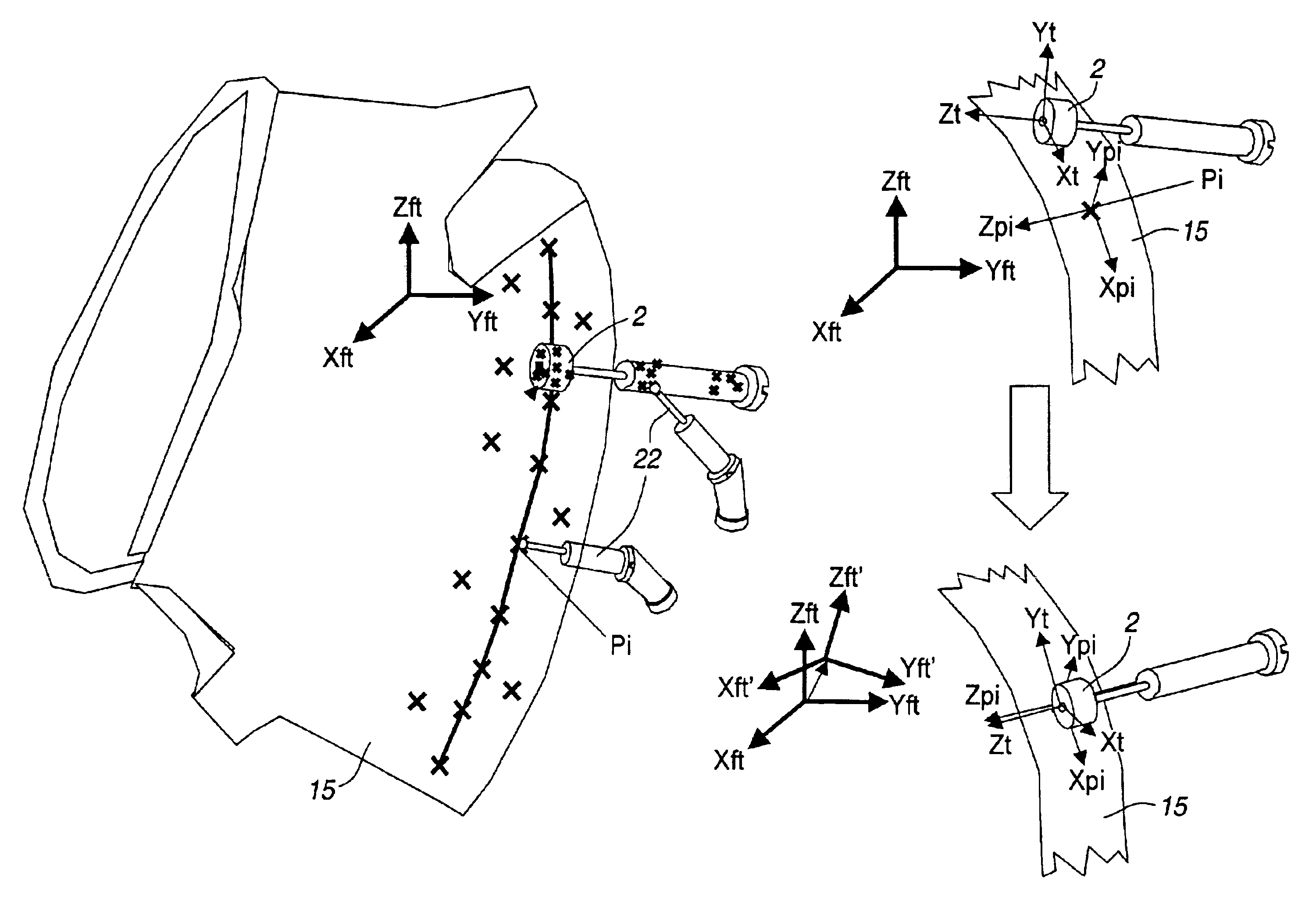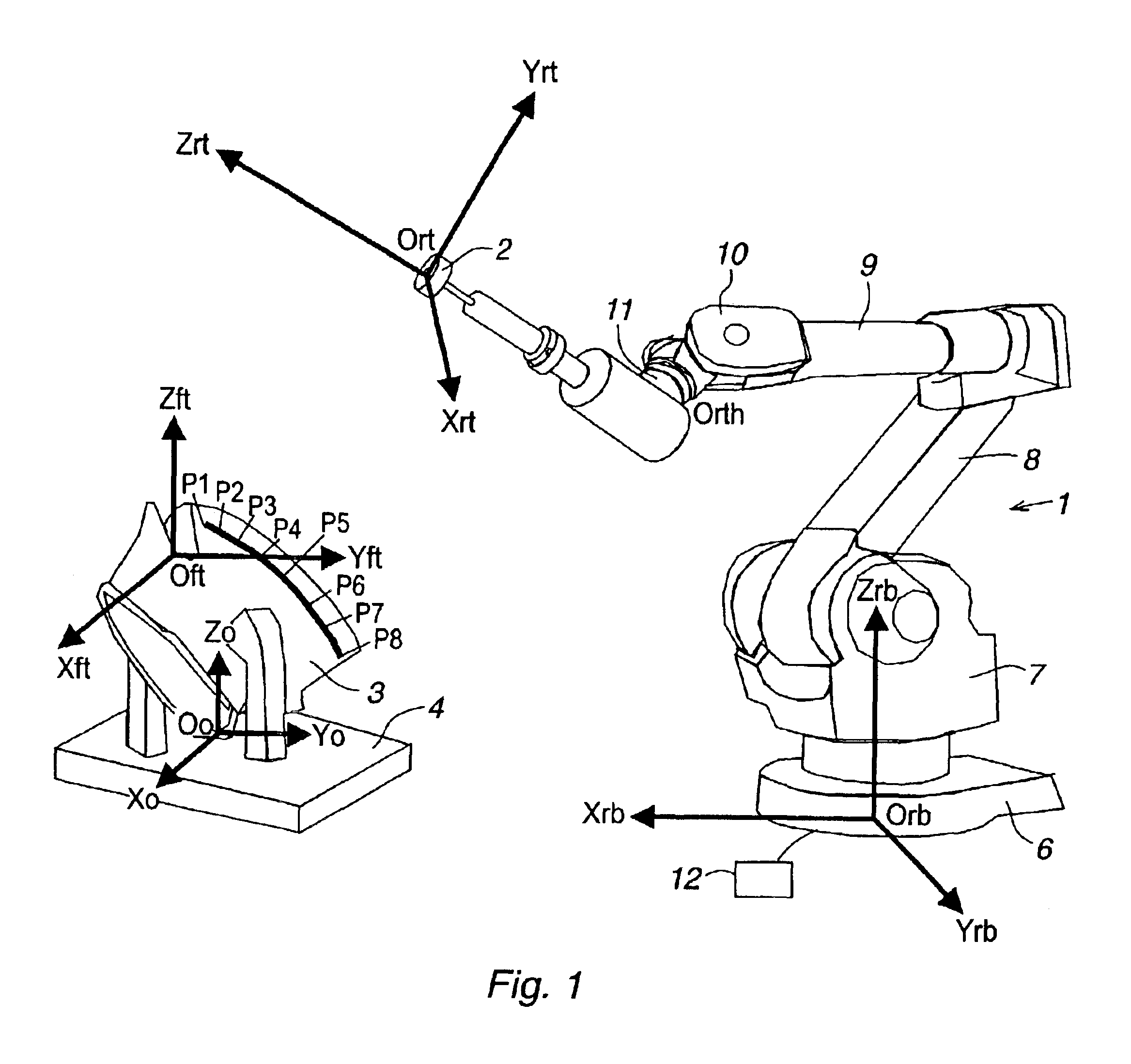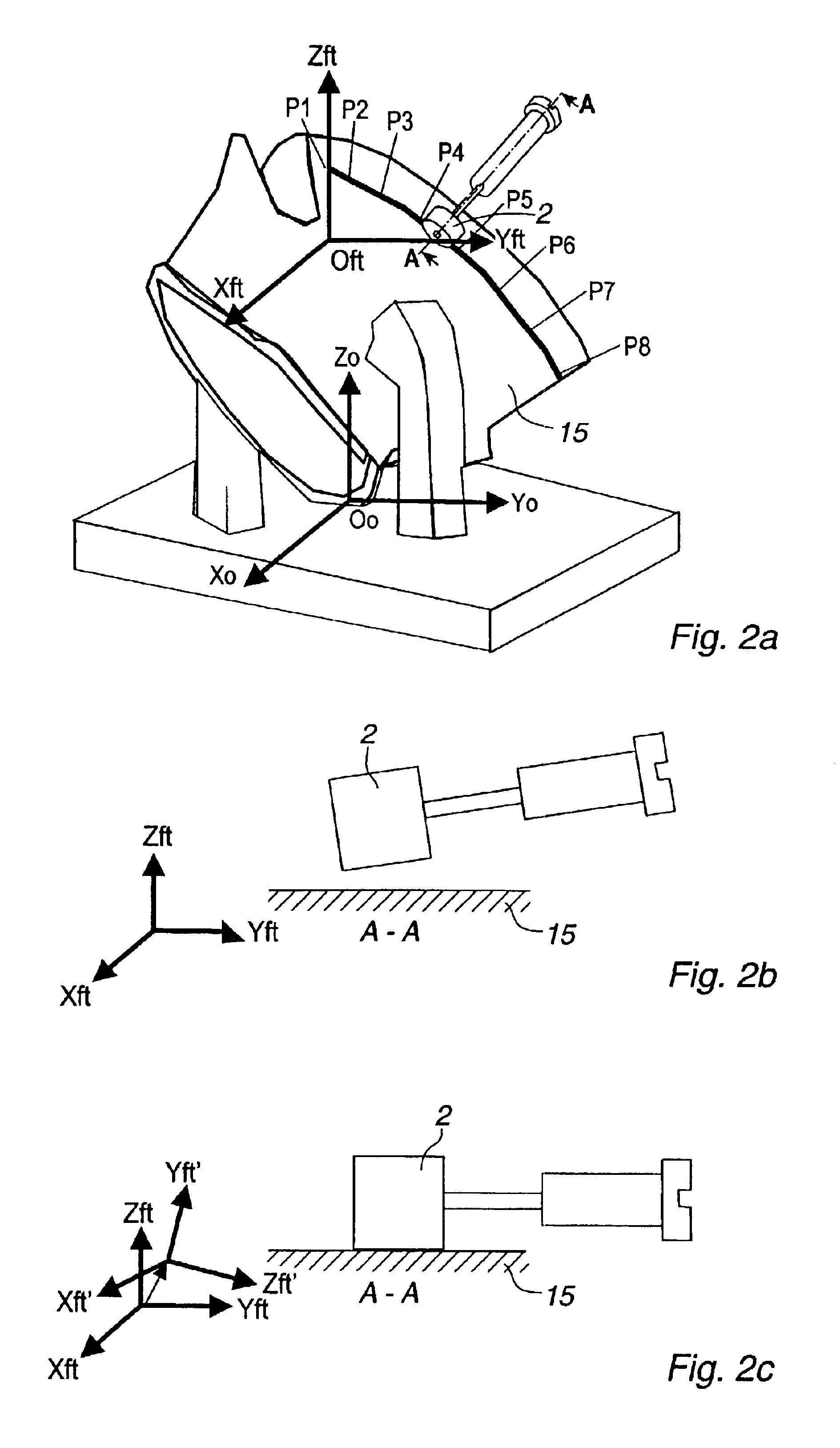Method for fine tuning of a robot program
a robot and program technology, applied in the field of robot program fine tuning, can solve the problems of time-consuming and labor-intensive programming of robots by teaching, limited application accuracy, and difficulty for human eye to find the correct position and orientation of tools, and achieve the effect of increasing the accuracy of applications
- Summary
- Abstract
- Description
- Claims
- Application Information
AI Technical Summary
Benefits of technology
Problems solved by technology
Method used
Image
Examples
Embodiment Construction
The robot application selected to describe the method according to the invention is machining, but the method can as well be used for any type of application, where high accuracy is needed.
FIG. 1 shows a robot application comprising an industrial robot 1, a tool 2 mounted on the robot, and a work object 3 to be processed by the tool. The work object 3 is attached to a fixture 4. The robot 1 comprises a base 6, which is firmly mounted on a foundation. The robot further comprises a support 7, which is rotateable relative to the base 6 around a first vertical axis. In the upper end of the support 7, a first robot arm 8 is rotatably mounted around a second horizontal axis. In the outer end of the first arm, a second arm 9 is rotatably mounted relative to the first arm around a third axis. The second robot arm 9 is rotatably mounted relative to an inner part of the arm around a fourth axis, coinciding with the length axis of the second arm 9. The second arm 9 supports in its outer end a ...
PUM
| Property | Measurement | Unit |
|---|---|---|
| offset distance | aaaaa | aaaaa |
| distance | aaaaa | aaaaa |
| movements | aaaaa | aaaaa |
Abstract
Description
Claims
Application Information
 Login to View More
Login to View More - R&D
- Intellectual Property
- Life Sciences
- Materials
- Tech Scout
- Unparalleled Data Quality
- Higher Quality Content
- 60% Fewer Hallucinations
Browse by: Latest US Patents, China's latest patents, Technical Efficacy Thesaurus, Application Domain, Technology Topic, Popular Technical Reports.
© 2025 PatSnap. All rights reserved.Legal|Privacy policy|Modern Slavery Act Transparency Statement|Sitemap|About US| Contact US: help@patsnap.com



